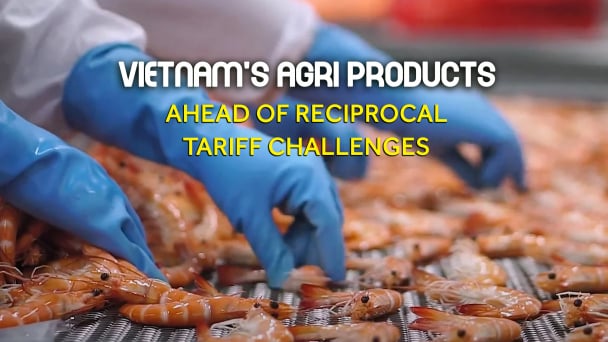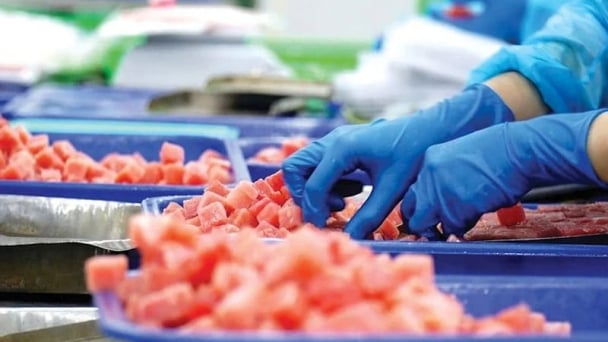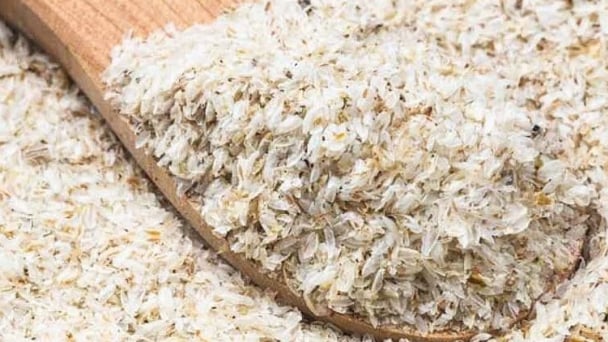May 29, 2025 | 18:20 GMT +7
May 29, 2025 | 18:20 GMT +7
Hotline: 0913.378.918
May 29, 2025 | 18:20 GMT +7
Hotline: 0913.378.918

Workers shovel sorghum into a processing machine to make Chinese spirit baijiu at a brewery in Binzhou, Shandong province, China October 21, 2018. Photo: REUTERS/Stringer/File Photo Purchase Licensing Rights.
China accounted for nearly 90% of U.S. sorghum exports last year, ramping up purchases of the crop it uses to feed livestock and make fiery baijiu liquor. Those purchases have largely ground to a halt, as tit-for-tat tariff increases by the U.S. and China cripple trade between the world's two largest economies.
U.S. sorghum exports to China dropped to 78,316 metric tons in January and February from more than 1.4 million metric tons over the same period a year earlier, down 95%, according to U.S. government data.
China bought 244 metric tons in the week ended on April 3, a miniscule amount, after purchasing none for the previous three weeks, the latest data showed.
The decline is a blow to farmers who largely backed Trump in his campaigns for president. Some are forgoing sorghum plantings due to concerns about market disruptions, while others, faced with few good options, are planning to plant more. Some growers are also now questioning their support for Trump's trade policies.
"If we move forward and things are not handled well, we could rethink some of those things," Atkisson said. He plans to plant about 1,000 acres (405 hectares) of sorghum in Stockton, Kansas, up 200 acres from last year, as part of a crop rotation.
U.S. farmers on average intend to expand plantings of the grain by 4% this year to the highest since 2023, the U.S. Department of Agriculture said last month. Meanwhile, the agency projected soybean seedings at a five-year low and spring wheat plantings at their lowest since 1970.
Dry weather conditions are pushing some farmers toward drought-tolerant sorghum in the hopes of a quick end to the trade war or generous aid from the Trump administration.
Economists say prospects for a speedy resolution are uncertain, and Brooke Rollins, the U.S. agriculture secretary, has said the administration could be months away from announcing a bailout plan for farmers.
Trump will expand markets for the U.S. agriculture industry and "ensure farmers have the support they need to feed the world," White House spokesperson Anna Kelly said.
Trump repeatedly raised tariffs on Chinese goods since imposing sweeping 10% duties in February, sparking rounds of retaliation from Beijing. China increased its tariffs on U.S. products to 125% last week.
Without Chinese demand, U.S. farmers and grain companies face lower prices for sorghum sold for domestically produced ethanol or cattle feed, growers said.
Inventories of the grain, which is grown mostly in the Plains region, swelled 42% from last year to 150 million bushels on March 1 as Chinese demand fell, according to USDA data.
"If you price it cheap enough, somebody will use it," Atkisson said. "That's the problem, that they're going to have to drop the price of that warehoused grain so they can move it."
Atkisson added that he does not have supplies left from last year's harvest.
The U.S. farm sector has already come under pressure from weak crop prices and stiff competition from Brazil for soy and corn export sales. China, the world's biggest soybean importer, increasingly turned to Brazil and other nations for crops after a U.S. trade war during Trump's first term in 2018.
The USDA projects total sorghum exports will fall 58% from last year to 2.54 million metric tons in 2024-25, the lowest since 2018-19.
Farmers said they are choosing the crop because it is resistant to dry conditions, and seeds are less expensive than for corn. They hope to boost sales to other importers or shore up potential losses with aid payments from USDA, which doled out billions to compensate growers for lost exports to China during Trump's first term.
The USDA did not respond to a request for comment.
"We farm in a pretty rough part of the world and we're used to challenges," said Tim Lust, CEO of the National Sorghum Producers group. "We'll work through this but look forward to the opportunity to get trade back moving."
Market uncertainty and poor prices are convincing some farmers not to plant sorghum at all. Glenn Brunkow, a farmer in Wamego, Kansas, said he will grow corn instead.
Strong U.S. exports have supported corn prices, and the USDA projected corn plantings will rise by 5% in 2025 to their highest in 12 years.
"For a long time, the sorghum price was at least equal to corn and sometimes was more," Brunkow said. "That's not the case right now."
Don Bloss is sticking with plans to plant about 500 acres of sorghum in mid-May in Pawnee City, Nebraska. He said he voted for Trump last year but thinks the president is abusing his use of tariffs.
"We've worked quite a few years to build up the markets for our grain," Bloss said. "It takes a lot of years of trying to build that up to have it knocked down in a day or two by one person."
(Reuters)

(VAN) Vietnamese shrimp exporters are actively looking for alternative markets and accelerating shipments to the United States in response to the pressure of impending reciprocal tariffs. This is occurring during a temporary tariff suspension.

(VAN) The import-export turnover between Vietnam and Singapore rose amid a trade rebound, with machinery, electrical equipment, and fuels making up the majority of the transaction value.

(VAN) Director General of the General Administration of Customs of China, Ms. Sun Mai Jun, has pledged to implement measures that will ease the import process for Vietnamese agricultural products.

(VAN) Although Vietnam is still increasing its coffee exports, the industry is currently in the process of determining market strategies in response to the U.S. imposition of reciprocal tariffs.

(VAN) With rising demand in Muslim-majority countries, Halal certification is becoming a critical passport for Vietnamese agricultural products seeking sustainable market access and consumer trust in the Middle East and Africa.

(VAN) Vietnam’s fruit and vegetable exports to the U.S. are rising sharply, and exporters are hoping that any upcoming reciprocal tariffs will be set at manageable levels.

(VAN) Despite meeting quality standards, Vietnamese rice bran exporters still face difficulties with administrative procedures under the new protocol.